Speaker Series
![Gray-Crowned Rosy Finch WM (2)-Enhanced[1]](https://marinaudubon.org/wp-content/uploads/2021/12/Gray-Crowned-Rosy-Finch-WM-2-Enhanced1-e1639674985553.jpg)
Birding New Mexico – Following the Central Flyway
Zoom Event CA, United StatesSpeaker: Rich Cimino
Host: Douglas Waterman
Thursday, January 13th
Start: 7:00 PM (NOTE NEW TIME)
Photo caption - “Gray-crowned Rosy Finch”
Photo by Rich Cimino
Please register for the program HERE
This month’s zoom presentation will take us into northeastern New Mexico-the Land of Enchantment. Currently eBird lists 556 bird species found in the state. From the Cottonwood Bosque Forest outside of Albuquerque to the aspen forests of the Sangre de Cristo Mountains surrounding Taos, it’s many birding spots include a variety of colorful habitats and landscapes. Rich Cimino will take us on a virtual tour of the New Mexico Central Flyway hotspot habitats during spring migration. Just a few of the birds found along the way include three species of Tanager, three of the Grosbeaks and the Cordellian Flycatcher.
Rich leads field trips for the Marin Audubon Society and works with the Corte Madera Restoration property, Point Blue Conservation and Golden Gate Raptor Watch. Rich is the owner and field guide for Yellowbilled Tours, offering small group birding tours to Alaska, Belize and other western U.S. states.
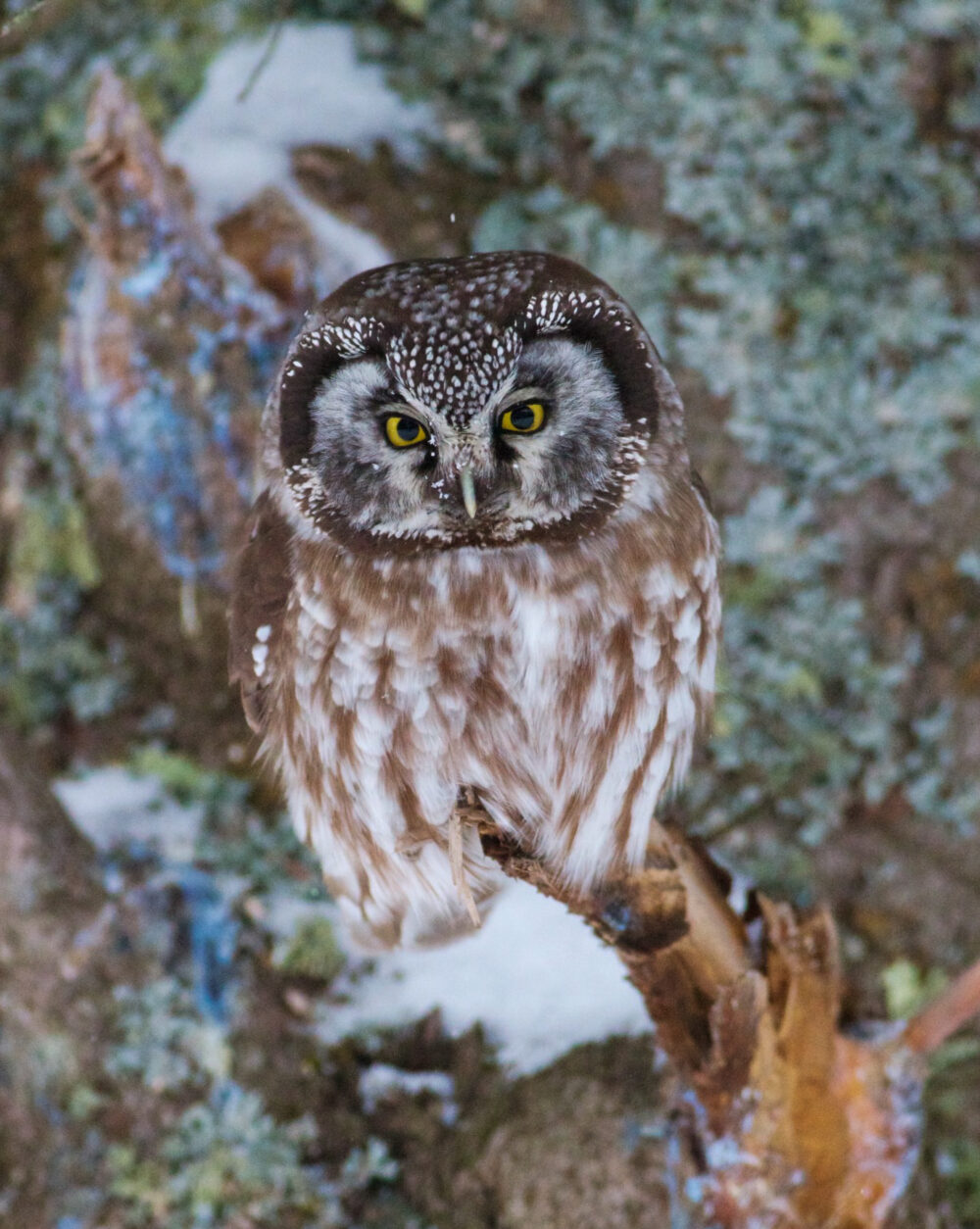
Minnesota’s Sax-Zim Bog & the “Invasion of the Vole Snatchers”
Zoom Event CA, United StatesThursday, February 10 at 7:00 PM
Speaker: Sparky Stensass
Photo: "Boreal Owl" by Sparky Stensass
Please register for the program HERE
After an Introduction to the Sax-Zim Bog and why it's the "magic mix" for boreal birds, we'll learn about the Invasion each winter of "vole snatchers": Great Gray Owls, Hawk Owls, Boreal Owls, Northern Shrikes, hawks, ermine, marten, fox, coyote and more survive and thrive on a diet of voles. And we'll also enjoy some HD video of these critters actually snatching voles. We'll also touch on the work of Friends of Sax-Zim Bog to preserve over 4,000 acres of bog lands for future generations of birds and birders.
Sparky Stensaas is the founder and executive director of Friends of Sax-Zim Bog (www.SaxZim.org). Sparky is also a naturalist, publisher, wildlife photographer and now YouTuber (really?). He is the author of 6 books on the natural history of the North Woods. You can see more of Sparky's images at www.ThePhotoNaturalist.com and his videos on YouTube “Sparky Stensaas”
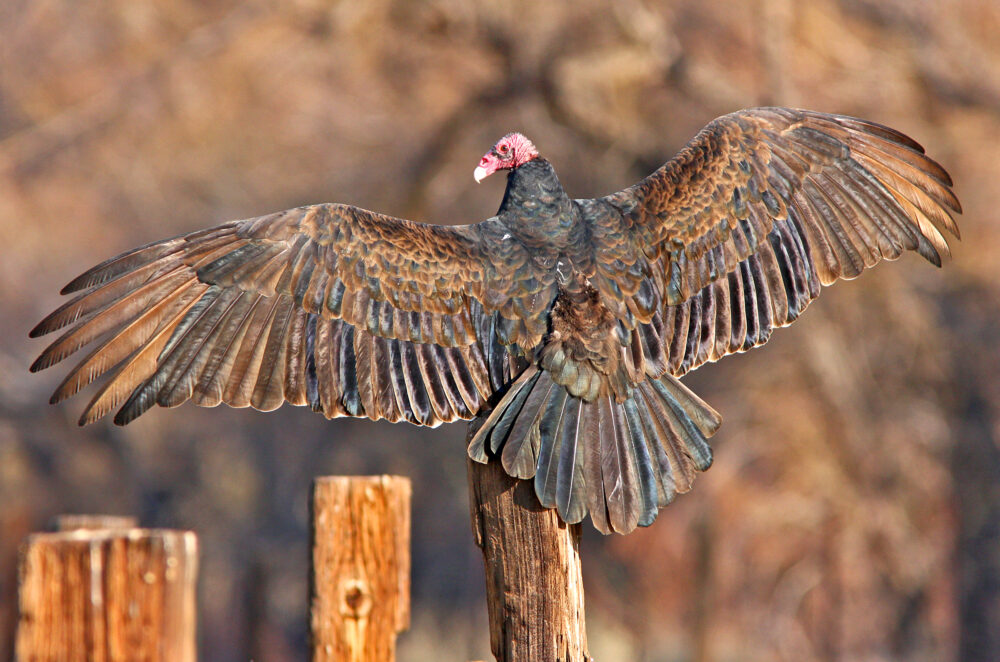
Turkey Vultures, California Condors, and the Migration of Raptors Through the Desert
Thursday. March 10 at 7:00 PM
By Kurt Leuschner
Photo: “Turkey Vulture Sunning Wings” by Stephen Myers
Please register for this event HERE
Each Fall and Spring the desert comes alive with migrating birds. Turkey Vultures are one of the earliest and most interesting of these migrants. Where are the going and what special habits and traits set Turkey Vultures apart from other migrating raptors? Are they really raptors or scavengers or both? Many of the secrets about Turkey Vultures, California Condors, and the migration of birds will be unveiled in this presentation.
Kurt Leuschner is a Professor of Natural Resources at College of the Desert where he teaches courses on Conservation, Entomology, Field Ornithology, Native Plants, and GPS Navigation. He is the founder of the Desert Cities Bird Club and is the past President of Western Field Ornithologists and the Natural Science Collaborative of the Desert. His most recent publications are the Palms to Pines Birding and Nature Trail map and brochure and a Field Guide to Desert Golf Course Wildlife.
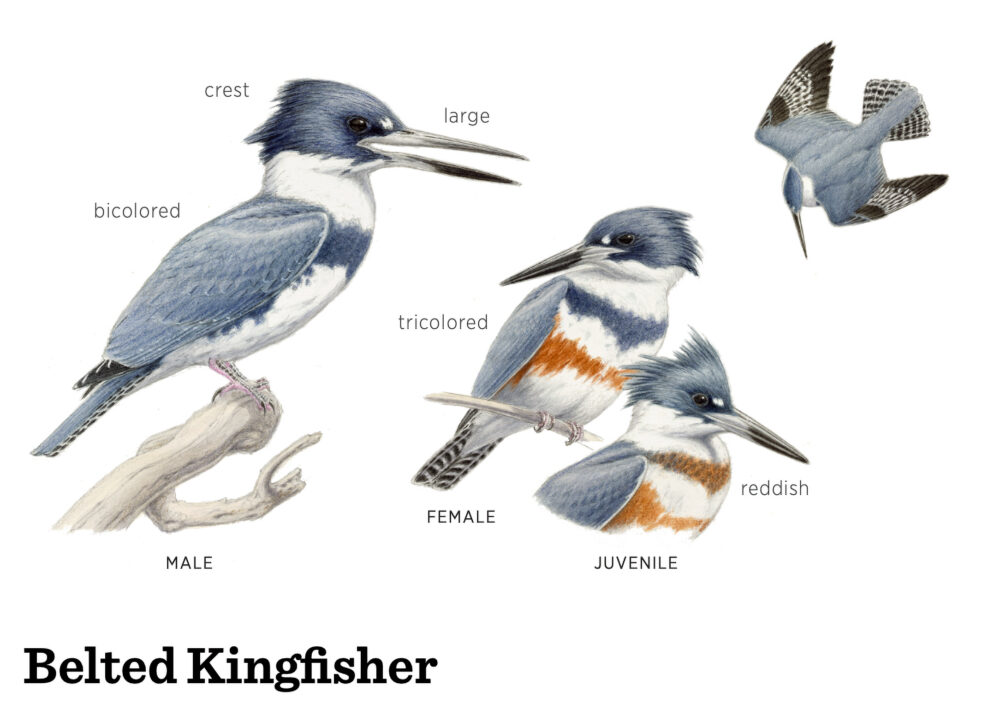
Eye, Mind, Hand, Line: Identifying Birds Through the Eyes and Words of an Artist
CA, United StatesTHURSDAY, April 14 at 7:00 PM
Speaker: Keith Hansen
Register for this Speaker Series HERE
Illustration by Keith Hansen
Our program focuses on highlights from Hansen’s Field Guide to the Birds of the Sierra Nevada, artist-naturalist Keith Hansen’s sixteen-year project to illustrate the birds of the Sierra Nevada. From the tiniest hummingbirds to condors with nine-foot wingspans, Keith brings his artist’s perspective to the identification and characteristics of his avian subjects through his beautiful illustrations and unique descriptions.
Keith’s path to his life’s work began as a barefoot kid exploring the woods of Maryland. Captivated by birds, he began drawing them as a teenager. Gathering fundamental experience regarding avian anatomy, he studied and banded hundreds of birds over the years on California’s Farallon Islands through the Point Reyes Bird Observatory. His life has been a generous mix of art and travel as he illustrated numerous books, ornithological publications and countless private commissions.
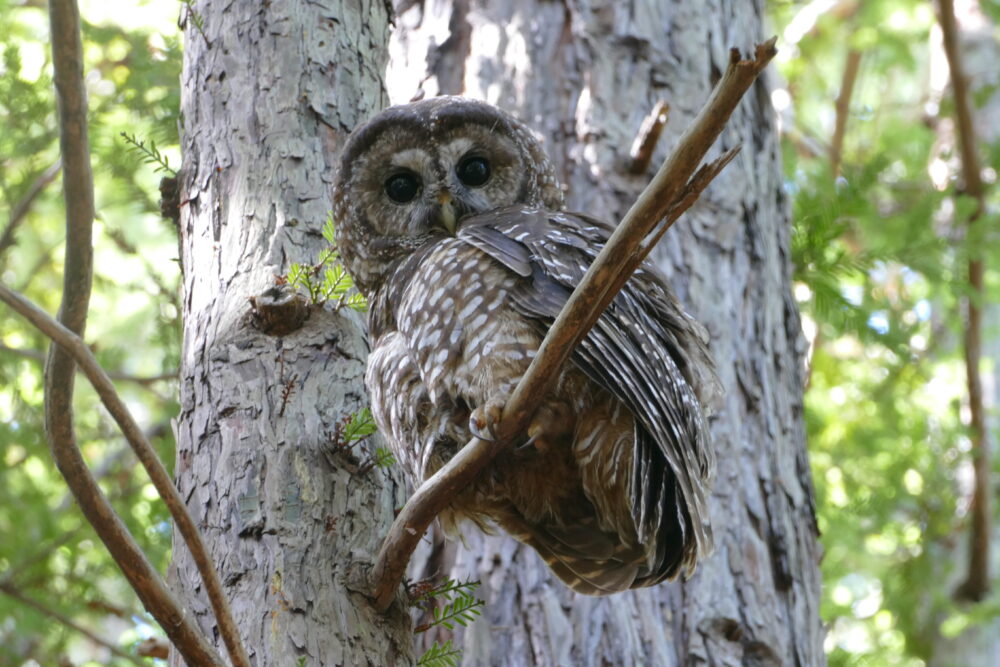
Northern Spotted Owl Monitoring in Marin County
CA, United StatesThursday, May 12 - Start Time 7:00 PM
Speaker: Renee Cormier
Register for this Speaker Series HERE
Please join us for a presentation by Point Blue Conservation Science's, Renée Cormier, to learn about Northern Spotted Owl natural history, conservation of this iconic species, and the long-term monitoring of this species in Marin County. Northern Spotted Owls are federally "Threatened" and state "Threatened" in California, but Marin County – at the southernmost extent of their range – is a stronghold for this subspecies. Renée is an avian ecologist at Point Blue, where she started as an intern in 2002. In addition to her work on long-term landbird studies at the Palomarin Field Station, and migration studies of songbirds, and she has been working with Spotted Owls in Marin County since 2006.
Photo Caption; Adult Northern Spotted Owl
Credit: Maggie Brown/Point Blue
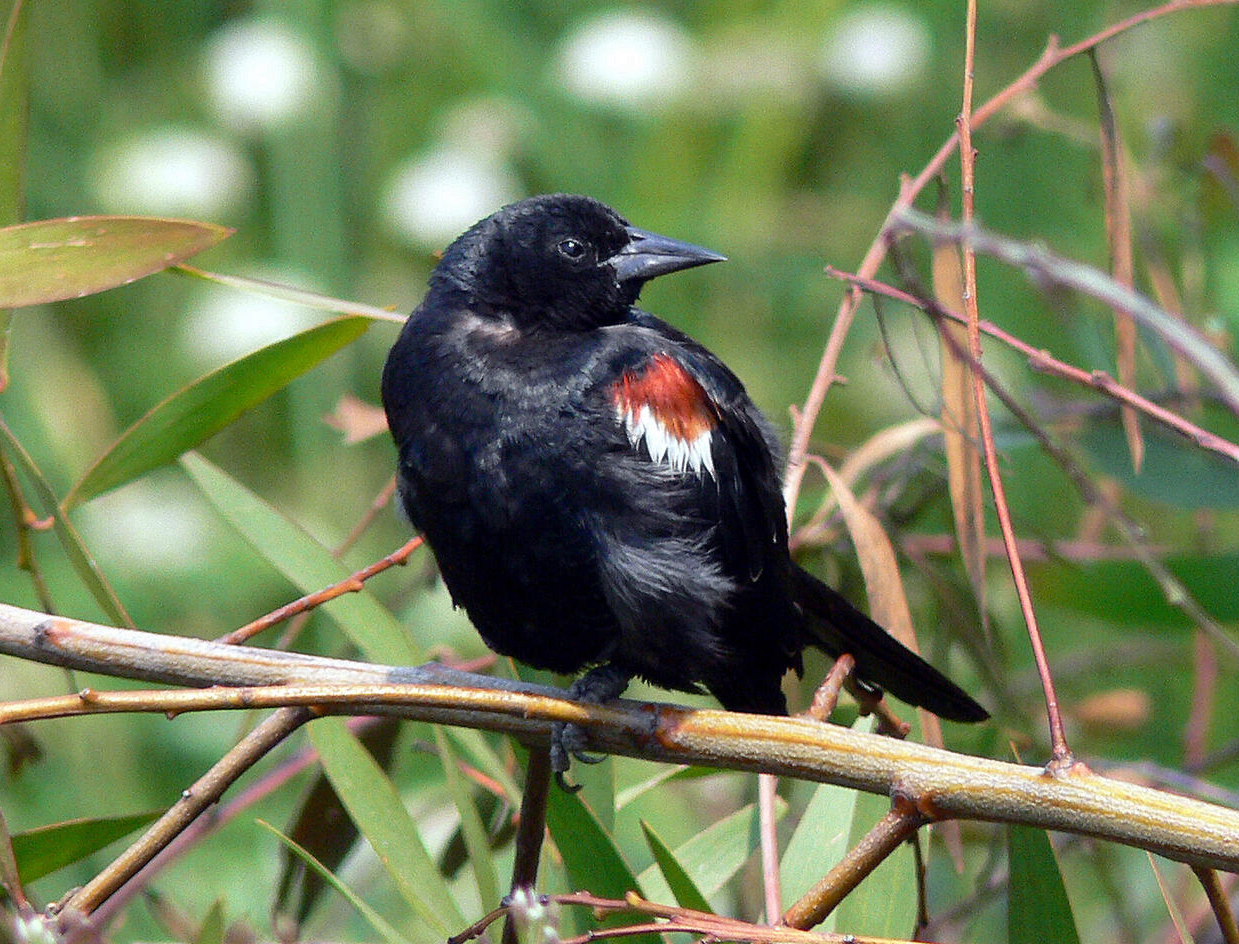
Tricolored Blackbird Ecology and Conservation in California’s Central Valley and Sierra Foothills
CA, United StatesThursday, June 9 at 7:00 PM
Speaker: Dan Airola
Register for the June Speaker Series Zoom program HERE
The Tricolored Blackbird has declined dramatically from its historical abundance to become a state-listed species, as a result of massive land-use changes in California’s Central Valley. The species has adapted and now occupies a variety of novel habitats, including agricultural fields and grazing lands in the Sierra Nevada foothills. Dan Airola has studied Tricolored Blackbirds over the last decade in the valley and foothills to understand their population status, habitat requirements, future land use threats, and conservation management. He offers a conservation assessment addressing both the challenges of land use change and encouraging efforts to conserve the species.
Raised in Marin County, wildlife biologist and ornithologist Daniel Airola conducts research and conservation efforts for birds of concern in northern California. He is a member of the statewide Tricolored Blackbird Working Group and leads its Research Committee. Other research species include the Purple Martin, Yellow-billed Magpie, Swainson’s Hawk, and Osprey. His recent book on 30 years of Purple Martin research and management is available at cvbirds.org.
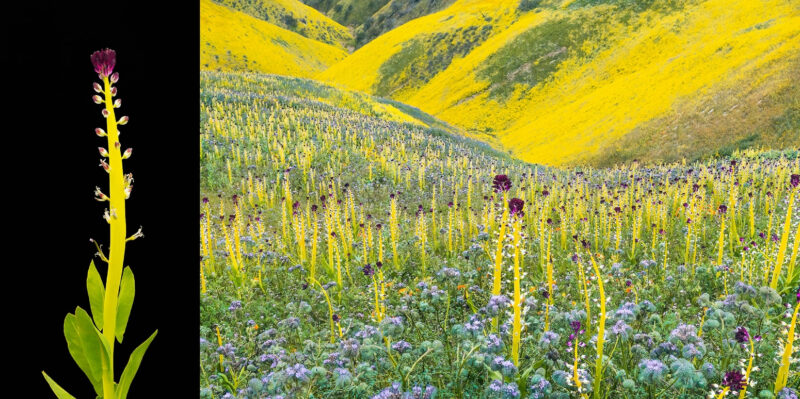
Beauty and the Beast: California Wildflowers and Climate Change
Zoom Event CA, United StatesThursday, September 8th - 7:00 PM
Speakers: Rob Badger and Nita Winter
Register for the September Speaker Series Zoom Program HERE
Internationally acclaimed conservation photographers Rob Badger and Nita Winter take you behind the scenes of their 27-year journey photographing wildflowers throughout California and the West. As the climate changes, and development impacts the natural world, wildflowers are vanishing. This program shows how two dedicated photographers continue to use their art, and the voices of a diverse group of scientists, environmental leaders and nature writers, to inspire hope and action regarding climate change, land conservation and species extinction.
Bob and Nina’s work has been featured in Time, Mother Jones and Sierra Magazines, the New York Times, San Francisco Chronicle and Los Angeles Times. They are recipients of the Sierra Club’s 2020 Ansel Adams Award for Conservation Photography. In their new, award-winning book, “Beauty and the Beast: California Wildflowers and Climate Change”, art and science are woven together to celebrate California’s wildflowers and promote Rob and Nita’s conservation and climate change messages.
Photo caption – Desert Candles, Carrizo Plain NM
Photo by Rob Badger and Nita Winter
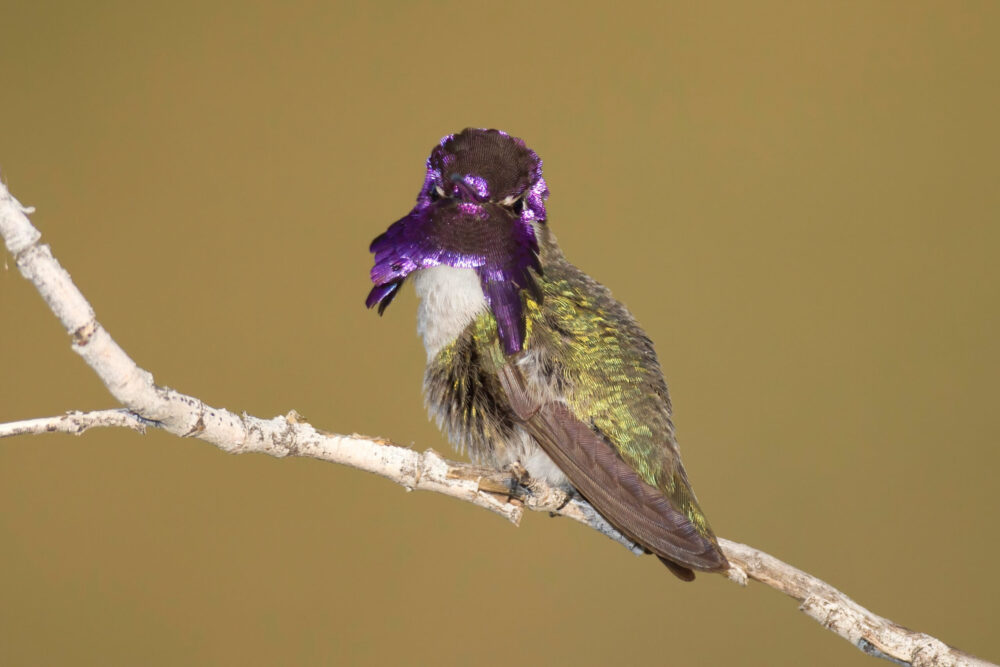
Hummingbirds of California and Beyond
CA, United StatesThursday, October 13 at 7:00 PM
Speaker: Bob Lewis
Free and open to the public.
Register for this speaker series program HERE
The story of hummingbird evolution starts about 50 million years ago, far from the lands they currently inhabit. We'll trace the history of their evolution and then briefly discuss relationships between the 9 tribes of living species. After reviewing California's 7 most common species - all belonging to the Bee tribe, we'll look at other North American species, and then examine representatives of the other tribes, mostly concentrated in South America. Finally, we'll consider some conservation issues and end with a few words on hummingbird photography.
Bob trained as a chemist and worked in the energy field for 33 years. He’s taught birding classes in the Bay Area for over 25 years and served as the chair of Golden Gate Audubon’s Adult Education Committee. Bob was honored with American Birding Association’s Chandler Robbins Award for Education and Conservation in 2016. He loves to travel and has photographed and chased birds in over 40 countries. His life list is over 5000 species.
Caption – Costa’s Hummingbird
Photo by – Bob Lewis

Anacapa Island Seabird Restoration
CA, United StatesThursday, November 10 at 7:00 PM
Speaker: Annie Little
Register HERE for the November Speaker Series
Photo caption: Scripps’s Murrelet
Photo by: Sarah Thomsen
The removal of invasive species from islands is a powerful tool for conserving and protecting unique island species. Island eradication projects often face formidable biological, logistical, and social challenges. This presentation will highlight the eradication of black rats from Anacapa Island. This project was the first rodent eradication from an island where an endemic rodent was present and the first aerial application of a rodenticide in North America. Now, 20 years after the successful implementation of the project, monitoring shows significant positive benefits to seabirds.
Annie Little is the Supervisory Natural Resource Manager for Channel Islands National Park. Prior to joining the National Park Service in 2019, she worked 23 years for the U.S. Fish and Wildlife Service. Annie's focus is the conservation of unique island ecosystems, including eradication and control of invasive species and habitat restoration. Annie is the U.S. coordinator for the Trilateral Island Initiative which promotes island conservation in Canada, U.S., and Mexico.
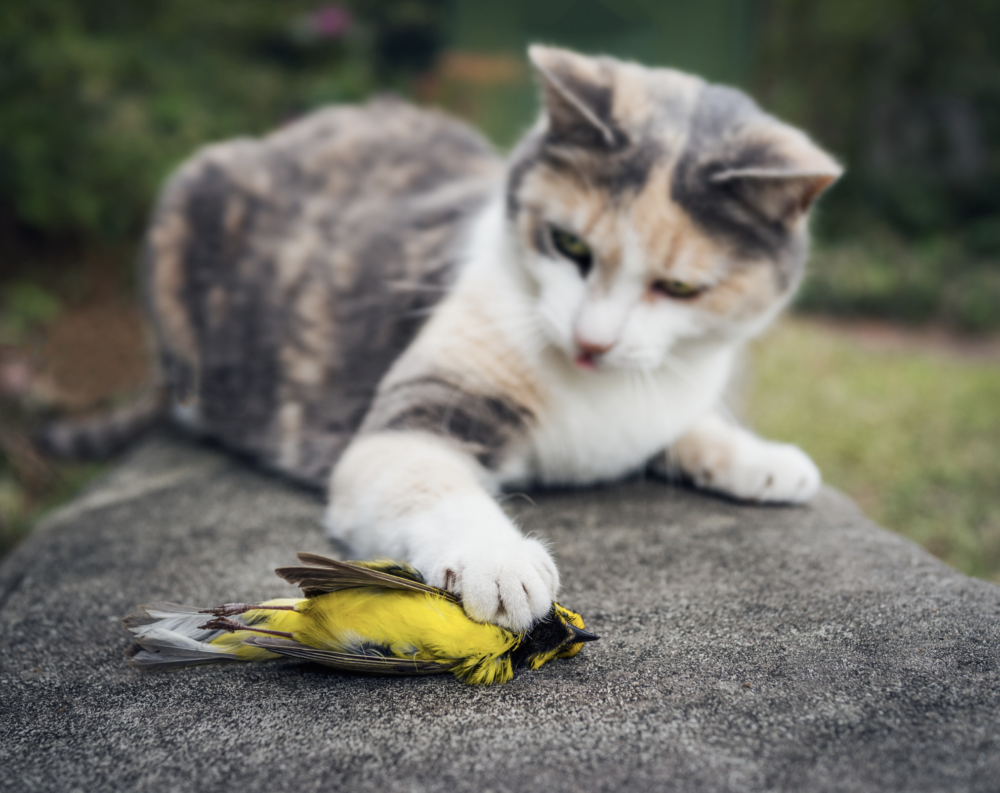
Domestic Cat Management: Challenges and Opportunities
CA, United StatesThursday, December 8, 2022
7:00 PM to 9:00 PM
Speaker: Grant Sizemore
Register HERE for this Speaker Series
Domestic cats (Felis catus) can make wonderful pets, but their unrestrained presence on the landscape presents serious challenges. Outdoor cats are introduced predators that inflict serious harm to birds and other wildlife and contribute to a variety of public health risks. Cat management, however, has historically been complicated by unclear authorities, resource limitations, competing priorities, and a tradition of laissez-faire attitudes. This talk will review the wildlife conservation and public health evidence emphasizing the need for owned and unowned cat management and present solutions for cat owners and communities to effect meaningful change that will benefit cats, wildlife, and people.
Grant Sizemore earned B.S. degrees in Zoology and Environmental Science from Miami University in Ohio and an M.S. in Wildlife Ecology and Conservation from the University of Florida. He has experience in wildlife conservation research, education, and policy and is currently the Director of Invasive Species Programs at American Bird Conservancy, where he has run the Cats Indoors program for the last 10 years.
Photo Credit - Shutterstock_forestpath
Caption – “Domestic Cat and Hooded Warbler”
Nature’s Best Hope
CA, United StatesPresentor: Doug Tallamy
Wednesday January 11, 2023
7:00 PM - 9:00 PM
Click HERE on the night of the program to join this Speaker Series - Passcode: 844579 ** Please note this is a direct link to the webinar, and you will be able to join the meeting at 7 PM on January 11th. It will not work before then.
Recent headlines about global insect declines and three billion fewer birds in North America are a bleak reality check about how ineffective our current landscape designs have been at sustaining the plants and animals that sustain us. To create landscapes that enhance local ecosystems rather than degrade them, we must 1 remove the invasives on our property and 2) add the native plant communities that sustain food webs, sequester carbon, maintain diverse native bee communities, and manage our watersheds. If we do this in half of the area now in lawn, we can create Homegrown National Park, a 20 million acre network of viable habitats that will provide vital corridors connecting the few natural areas that remain. This approach to conservation empowers everyone to play a significant role in the future of the natural world.
Doug Tallamy is the T. A. Baker Professor of Agriculture in the Department of Entomology and Wildlife Ecology at the University of Delaware, where he has authored 106 research publications and has taught insect related courses for 41 years. Chief among his research goals is to better understand the many ways insects interact with plants and how such interactions determine the diversity of animal communities. His books include Bringing Nature Home, The Living Landscape, co-authored with Rick Darke, Nature's Best Hope, a New York Times Best Seller, The Nature of Oaks, winner of the American Horticultural Society’s 2022 book award. In 2021 he co-founded Homegrown National Park with Michelle Alfandari. His awards include recognition from The Garden Writers Association, Audubon, The National Wildlife Federation, Allegheny College, The Garden Club of America and The American Horticultural Association.
Tonight’s program is a Zoom presentation of Golden Gate Audubon Society, co-sponsored by Marin Audubon Society and other Bay Area Audubon chapters. The direct link to the program is below. No registration is required.
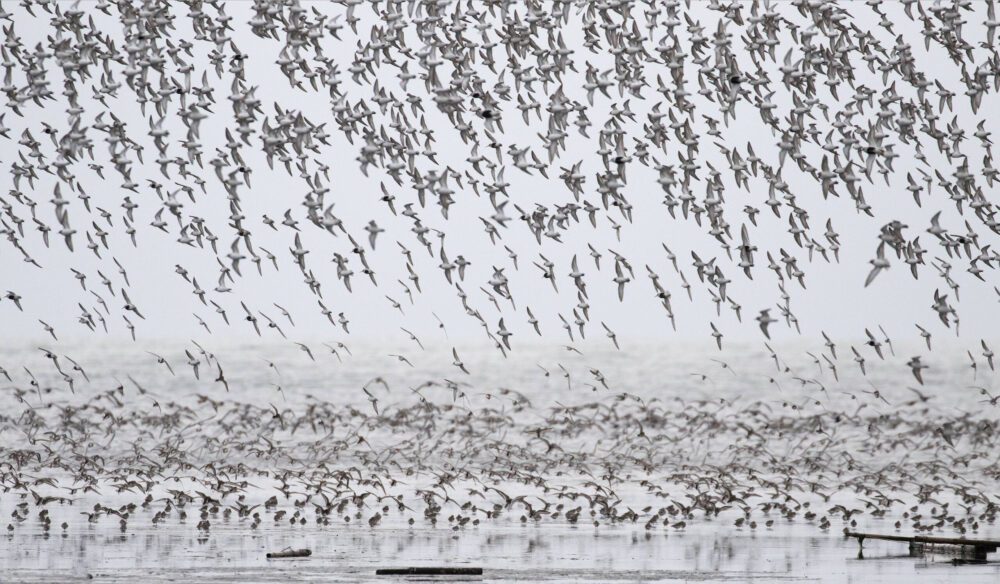
A World on the Wing: The Global Odyssey of Migratory Birds
CA, United StatesThursday February 16th, 2023
Start Time: 6:00 PM
Speaker: Scott Weidensaul
This program is a Zoom presentation of Golden Gate Audubon Society, co-sponsored by Marin Audubon Society and others.
Please use THIS LINK the night of the Speaker Series. Password: 066785
Scientists continue to make astounding discoveries about the navigational and physiological feats that enable migratory birds to cross immense oceans, fly above the highest mountains, go weeks without sleep or remain in unbroken flight for months at a stretch. Scott Weidensaul, author of A World on the Wing (2021), takes us around the globe -- to the shores of the Yellow Sea in China, and the remote mountains of northeastern India where tribal villages saved the greatest gathering of falcons on the planet, to learn how people are fighting to understand and save the world's great bird migrations.
Scott Weidensaul's field research focuses on bird migration. He is a co-director of Project Owlnet, studying owl migration, and is a founder of the Critical Connections project, which is tracking the migration of birds that breed on National Park lands in Alaska. He co-founded the Northeast Motus Collaboration, which is creating a network of telemetry receivers to track the movements of bats, insects and small birds.
Image: Shorebirds swarm the mudflats of the Yellow Sea in China, one of the most endangered migratory hotspots on the globe.
Photo by: Scott Weidensaul
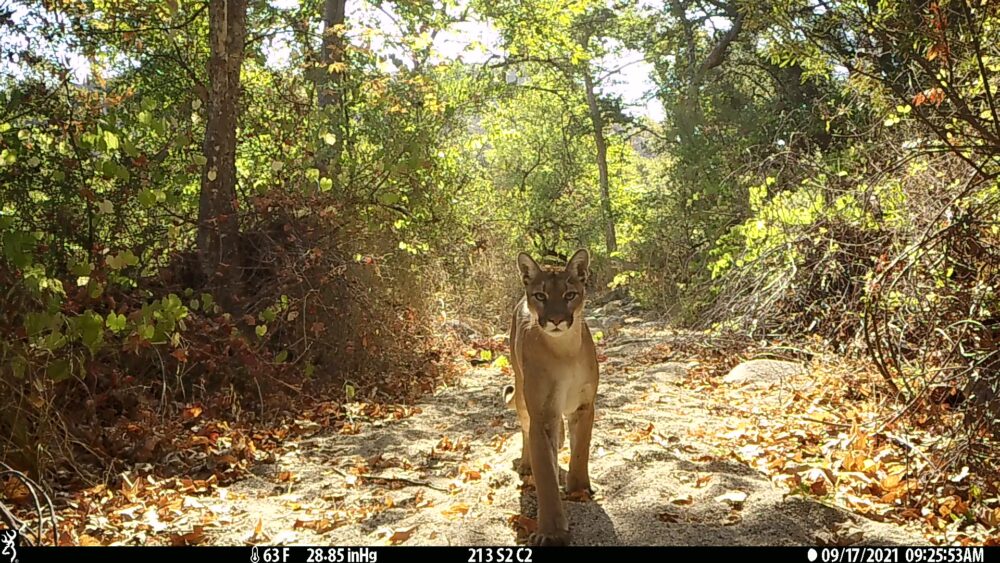
Bay Area Mountain Lions – What We Know about Them and How They Fit into the Larger Statewide Population
CA, United StatesThursday March 9, 2023
7:00 PM - 9:00 PM
Speaker: Winston Vickers
Register HERE for this Speaker Series
Mountain Lions in California are fragmented into subpopulations by roads and development. The Bay Area populations to the north and south of San Francisco are separated from each other and are separated from others further south and east by roads, development, and agriculture. Those to the north are affected by increasing road traffic, agricultural conversions for the wine industry, and other factors. Dr. Vickers will discuss the state of current knowledge, legal status, and ongoing research and mitigation efforts that are focused on these populations.
Dr. Winston Vickers is a wildlife research veterinarian with the University of California-Davis Wildlife Health Center (WHC). He has been studying mountain lions and other wildlife in California for 20 years and directs the WHC’s California mountain lion study. He collaborates widely with other mountain lion researchers, as well as collaborating on studies involving bobcats, wolves, Channel Island foxes, Santa Cruz Island scrub jays, and waterfowl. He has also worked on oil spill response with the Oiled Wildlife Care Network at UC Davis.
Photo by: Winston Vickers
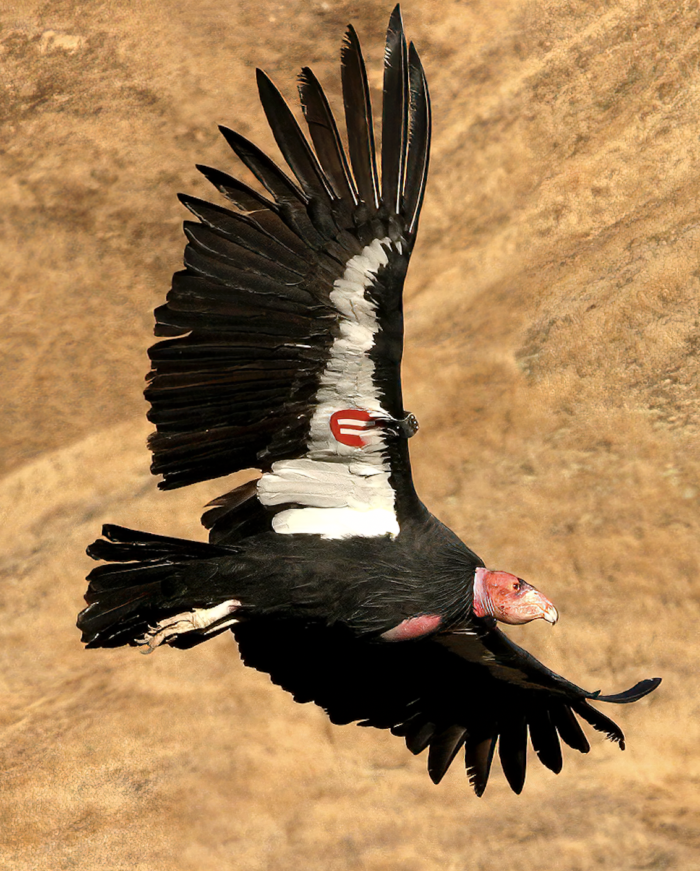
California Condor – Forever Free
CA, United StatesThursday April 13, 2023 - 7:00 pm
California Condor – Forever Free
Speaker: Kurt Leuschner
Register HERE for this Speaker Series Program
In this presentation you will learn about the California Condor (Gymnogyps californianus) – one of the largest and rarest birds in the world. Topics covered include: their conservation and natural history, recovery, reintroduction, and on-going preservation efforts (past and present), fun facts, and locations to see condors in the wild.
Kurt Leuschner is a Professor of Natural Resources at College of the Desert where he teaches courses on Conservation, Entomology, Field Ornithology, Native Plants and GPS Navigation. He has a Bachelor’s degree in Zoology from U.C. Santa Barbara and a Master’s in Wildlife Ecology from the University of Florida. He is the founder of the Desert Cities Bird Club and is the past president of Western Field Ornithologists and the Natural Science Collaborative of the Desert. His most recent publications are the Palms to Pines Birding and Nature Trail map and brochure and a Field Guide to Desert Golf Course Wildlife. Kurt also teaches weekend courses and workshops on birdwatching, insect, PGS and backyard habitats. His most recent research project involved the sound recording of the various subspecies of North American Scrub-Jays.
Photo: California Condor
Photo by: US Fish & Wildlife Service
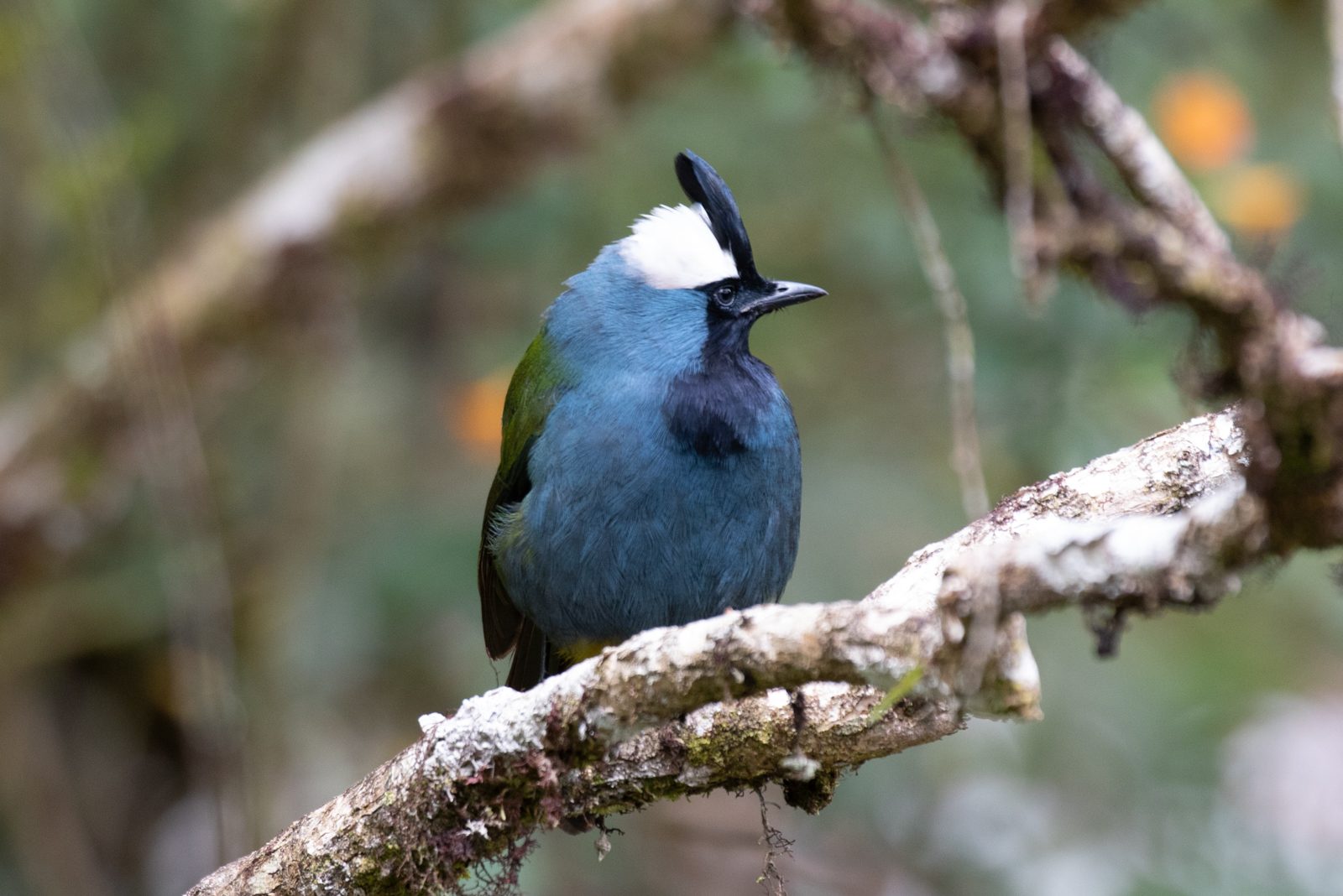
Islands and Avian Evolution
CA, United StatesThursday May 18, 2023
7:00 PM - 9:00 PM
Speaker: Bob Lewis
Please register HERE for this Speaker Series
Islands have played a key role in both the development of new avian species and the extinction of others. Because they are isolated land masses, species which arrive on islands evolve separately from their parent group and through genetic drift eventually become unique. But because island species are restricted to small areas and have small populations, they are also susceptible to chance events, human-caused pressures, and predation by introduced species and introduced diseases.
In this presentation, we will focus on the wonders of these unique island species, as well as discuss some of the issues and threats to island avians.
Bob Lewis trained as a chemist and worked in the energy field for 33 years. He’s taught birding classes in the Bay Area for over 25 years and served as the chair of Golden Gate Audubon’s Adult Education Committee. Recently he’s been giving classes and talks via Zoom. Bob was honored with American Birding Association's "Chandler Robbins Award" for Education and Conservation in 2016, and Golden Gate Audubon’s "Paul Covel Education Award" in 2010 and 2017. He loves to travel and photograph birds and has chased birds in over 40 countries. His life list is over 5000 species.
Photo Credit: Bob Lewis
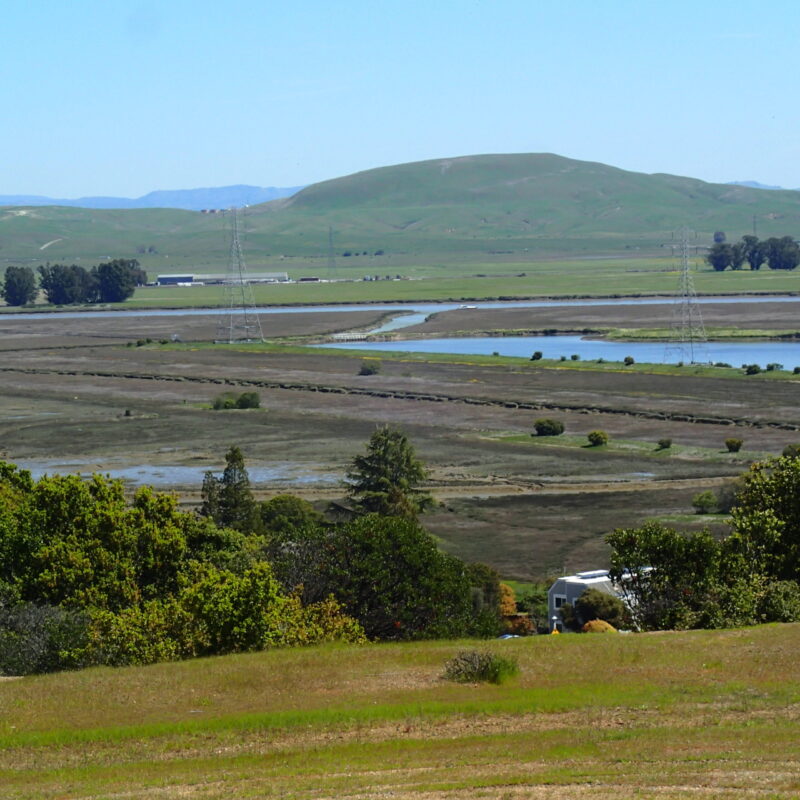
Marin Audubon Society Properties
CA, United StatesThursday June 15, 2023, 7:00 PM
Speaker: Jude Stalker
Register for this Speaker Series HERE
For almost twenty-five years Marin Audubon Society (MAS) has been acquiring wetlands (or historical wetlands) and adjacent upland properties in Marin County; restoring, stewarding, and preserving the land as valuable wildlife habitat. Some of these properties came very close to being developed but ended up with MAS due to the perseverance of those individuals who early on understood the value and importance of wetland habitat. Some have been stewarded by an impressive group of dedicated volunteers and enjoyed for their beauty and bountiful birdlife by many people throughout the years.
Jude Stalker will take you on a virtual tour of several of these properties and fill you in on the interesting ways that they were acquired and of how they have been restored, enhanced, and stewarded to support the many native plants and animals that are populating them now.
Jude is a wetland biologist who has worked in and around the SF bay wetlands for over twenty years. She is a long-time member of the board of MAS and spends much of her free time volunteering to help steward the MAS (and other) properties.
Photos: Bahia Property
Photo by: Jude Stalker
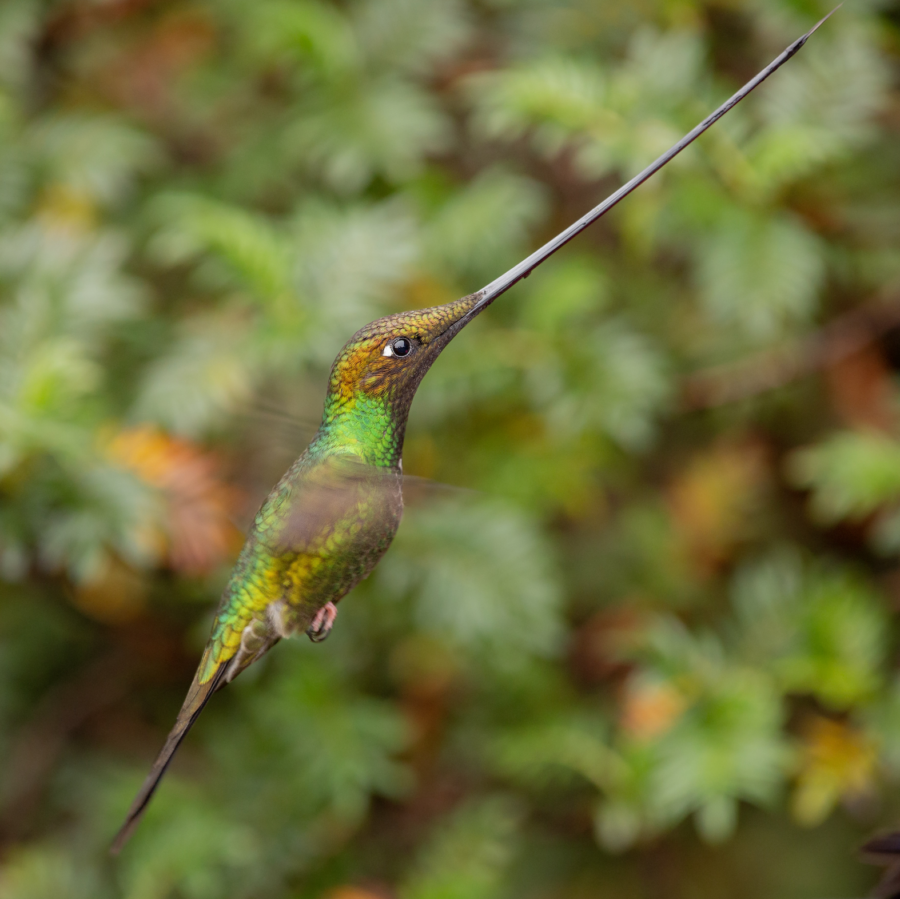
Hummingbirds
CA, United StatesThursday September 14, 2023
7:00pm - 9pm
Speaker: Benny Jacobs-Schwartz
Register HERE for this Speaker Series
From Alaska to the high Andes of South America, join us as we explore the magic of hummingbirds!
With 360 species recognized globally, we’ll discuss their remarkable biology, expansive range, ecological significance, and the best way to attract them to your yard! Mouth-watering media and local hummingbird ID section included!
Speaker Bio: Benny Isaac Jacobs-Schwartz owns and operates a bird-guiding business and lifestyle brand called BIRDS by BIJS (pronounced Bee-jus). Working professionally for over 10 years as a naturalist guide, expedition trip leader, and international bird guide, Benny has worked in a variety of locations coast to coast, including exotic places such as coastal Alaska, Central America, Trinidad and Tobago, and the Ecuadorian Amazon.
Benny is a passionate educator and photographer, specializing in birds! Benny uses his ample collection of nature-based content to leverage an active social media presence. BIJS uses his passion for the natural world to inspire others to put down their phone and pick up their binoculars.
Photo: Sword-billed Hummingbird
Photo by: Benny Jacobs-Schwartz
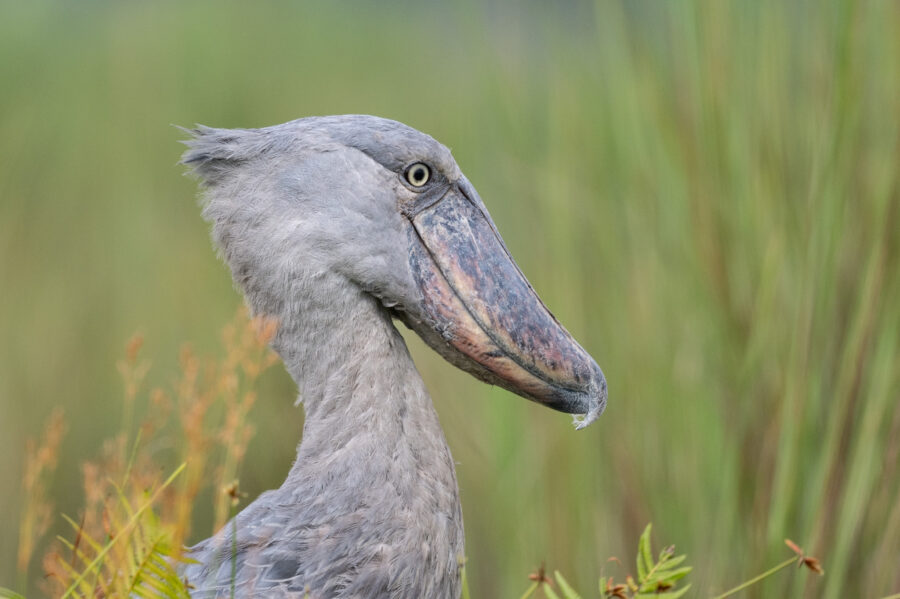
Unique and Rare Birds of Sub-Saharan Africa
Thursday October 12, 2023
7:00pm-9:00pm
Unique and Rare Birds of Sub-Saharan Africa
Speaker: John Sterling
Please register HERE for this Speaker Series
Topic:
John will take us on a virtual tour of some of Africa’s most unique and rare birds from his travels in Ghana, Uganda, Kenya, and South Africa, and will discuss some of the threats and challenges for some of the endangered birds and their habitats.
He will be discussing conservation issues such as climate change and loss of habitat; and many of the species in peril, such as Montane Blue Swallow, Picathartes, Shoebill and Nahan’s Partridge. He will also talk about other bird families and species unique to the sub-Saharan region, such as Hammerkop, Ostriches, Turacos, Flufftails and Egyptian Plover.
Speaker Bio:
John has been actively birding since 1971 and embarked on a career in ornithology while a student at Humboldt State University in 1979. He has worked for the Smithsonian Migratory Bird Center in Washington DC, research labs of the US Forest Service, and many other organizations in Latin America and California.
Photo: Shoebill (whale-headed stork)
Photo by: John Sterling
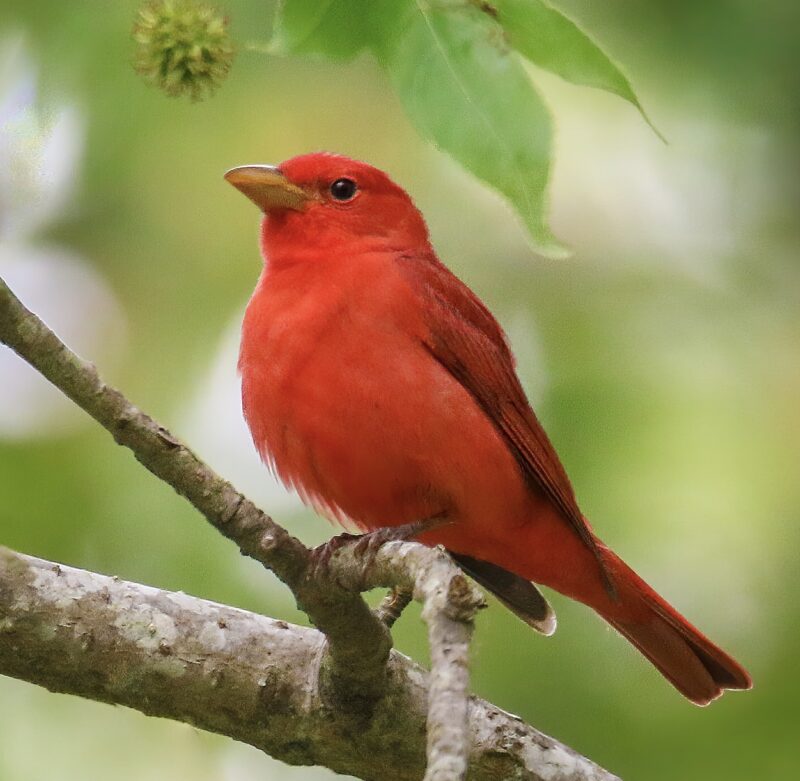
My Favorite Birds of the Sierra Nevada
Thursday November 9, 2023
7:00 PM - 9:00 PM
Speaker: Rich Cimino
Register HERE for this Speaker Series
Topic:
Rich will be discussing and showcasing his favorite birds from the Sierra Nevada. He will share with us where he has photographed certain species and illustrate population distributions with maps. He will be discussing their various habitat requirements and conservation concerns.
Among other birds, Rich will be showing the Flammulated Owl, Clark’s Nutcracker, American Dipper, Nashville Warbler and Black Swift.
Speaker Bio:
Rich Cimino lives in Larkspur and is an active member of the Marin Audubon Society, where he participates in three Marin Christmas Bird Counts and the Marin County Breeding Bird Atlas. He has been birding Northern California for 55 years, leading Bay Area Audubon and Marin Audubon field trips. He is also active in conservation groups in Northern California, emphasizing preservation of habitat.
Photos: Summer Tanager
Photo by: Beverly Meekins, USFWS
Next Speaker - Thursday, December 14
Controlling Invasive Spartina and Protecting SF Bay Marsh Habitats, by the California Invasive Plant Council
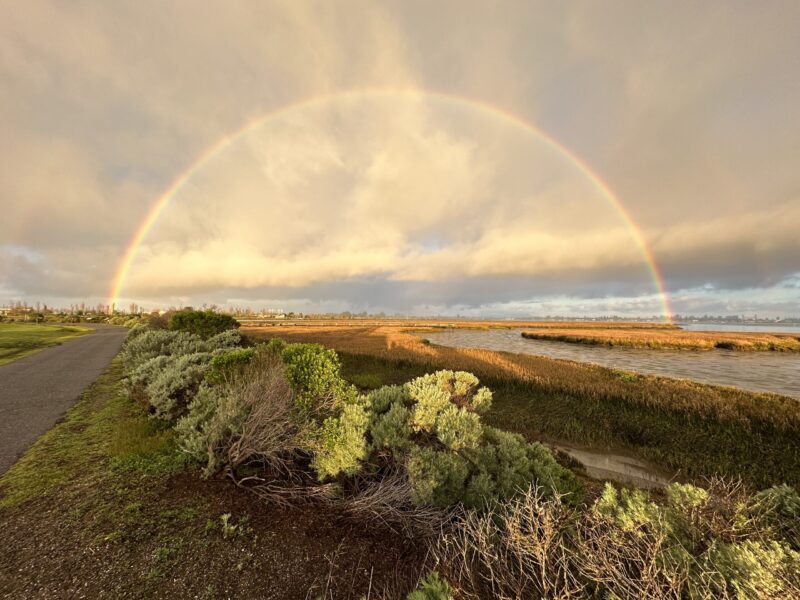
Protecting Biodiversity and Facilitating Landscape-scale Tidal Marsh Restoration: Management of Invasive Spartina in the San Francisco Estuary
Thursday, December 14, 2023, 7:00 pm - 9 pm
Speaker: Jen McBroom, California Invasive Plant Council
Register HERE for this Speaker Series Program
Topic:
San Francisco Bay is the largest estuary on the west coast of North America and a critical stopover along the Pacific Flyway migration route for millions of shorebirds and waterfowl. Rimming the Bay between freeways, airports, and landfills remain precious tidal wetlands and opportunities to return salt evaporator ponds to functioning ecosystems. Since 2005, the Coastal Conservancy’s Invasive Spartina Project has used airboats, genetic testing, sophisticated GIS, and a lot of hard, muddy work to push back the invasive plants that threaten habitat for shorebirds, waterfowl, and the endangered salt marsh harvest mouse. Learn about how hometown heroes are doing their part to address the global biodiversity crisis.
Speaker Bio:
Jen McBroom is a biologist at Olofson Environmental Inc. and has been counting Ridgway’s rails for the Invasive Spartina Project since 2005. She got her start in the tidal wetlands of the San Francisco Bay studying song sparrows and marsh wrens after finishing her degree at UC Davis. Since then, she has logged many hours in muddy boots mapping invasive plants and observing the wildlife at the edge of the Bay.
Photo: Marsh along San Leandro Bay
Photo by: Simon Gunner
Next Speaker - Thursday, January 11, 2024
Northern Spotted Owls, by Taylor Ellis, National Park Service